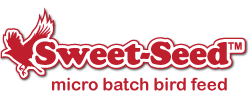What Month Do You Put Out Hummingbird Feeders?

Many birders eagerly anticipate the return of hummingbirds and the hovering happiness they bring to the yard. I know as spring begins to warm, I’m eagerly watching favorite perches, flowerbeds, and feeding stations for my flying jewels to reappear! But when do they return, and what month do you put out hummingbird feeders to offer a fast and convenient meal these flitting fliers? The answer isn’t always clearcut.
The Timing of Hummingbird Migration
The exact dates of the spring migration of hummingbirds can vary from year to year. When the winter is mild and storms are few, even the tiniest birds might arrive sooner than expected. On the other hand, in harder years with harsher winters and late freezes, hummingbirds might be a bit delayed and arrive later than usual.
The timing can be even trickier if late winter and early spring are filled with significant temperature swings from bitter cold to balmy warmth. In these years, it could be anyone’s guess when hummingbirds might arrive and what month is best to put out refreshed and filled nectar feeders.
Of course, the individual geography of a region can also have an impact on hummingbirds’ arrival. In coastal areas that might warm up more quickly, hummingbirds can arrive weeks ahead of their cousins just a hundred miles inland. Likewise, in areas of higher elevation, the birds may arrive later than when they first appear in sheltered valleys.
Deciding What Month to Put Out Hummingbird Feeders
Ideally, you want to put out hummingbird feeders slightly before the birds actually arrive on their northbound journeys. Hummingbirds have very good site memories for top food sources, and having feeders immediately available will encourage them to return year after year.
Putting out feeders too early, however, risks frozen nectar that could warp or crack feeders. Similarly, feeders without hummingbirds visiting might be a waste if nectar spoils and must be replaced before the birds arrive.
In general, the best months to put out hummingbird feeders, by region, are…
- Late March – Florida, Texas, and coastal regions along the Gulf of Mexico
- Early to Mid-April – Southern and coastal states, including Louisiana, Mississippi, Alabama, Georgia, South Carolina, New Mexico, Arizona, coastal California, Tennessee, and North Carolina
- Late April – Central states including Oklahoma, Arkansas, Kentucky, West Virginia, Virginia, Utah, Colorado, northern Nevada, and northern California
- May – The rest of the continental 48 states and into southern Canada
- Late May – Southern and coastal Alaska
In some areas, especially southern Arizona and New Mexico, south Florida, and southern coastal California, hummingbird feeders can be left out year-round for the resident hummingbirds to enjoy. As more hummingbirds arrive, however, it can be prudent to add more feeders to the yard so there are plenty of prime feeding spots for everyone to share.
Only one state should never put out hummingbird feeders – Hawaii. There are no hummingbirds in Hawaii, as these tiny birds are not naturally found in the Aloha State and they do not migrate to the islands.
Fine Tuning Your Hummingbird Calendar
An easy way to more precisely tune exactly what month, week, and even day to put out your hummingbird feeders is to keep a personal journal of the birds’ migration timing. A simple calendar where you note the dates of your first annual hummingbird sightings can help you learn their schedule and appreciate how precisely they time their journeys year after year.
In addition to noting the birds themselves, keeping a record of other signs of spring – budding trees, the first floral blooms, leaf emergence, when insects get more active – will also help you put out hummingbird feeders at exactly the right time.
What If You Put Out Feeders Late?
If you miss out on the very first date that hummingbirds arrive, is it too late to put out your feeders? Never!
Because hummingbirds visit dozens or even hundreds of individual flowers every day, they will happily investigate a new feeder that might not have been there the day before. Furthermore, while the earliest hummingbirds might arrive on a specific date, the movement of the birds is fluid and different birds will be arriving every day.
Even if you feel you’re late, putting out the feeders will still help support hungry hummers. Try positioning the feeder near nectar-rich flowerbeds so they can be noticed more quickly, and you’ll soon see hummingbirds taking sip after sip all through the summer.
